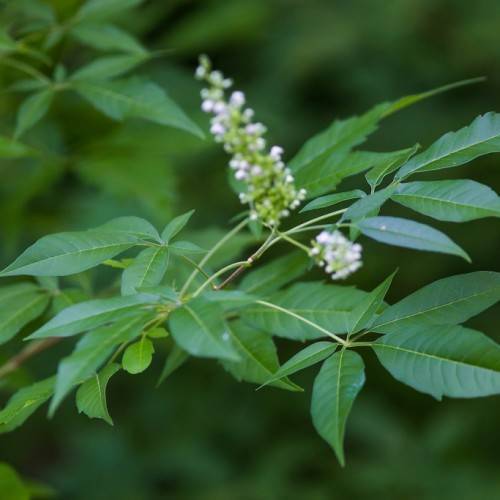
chaste tree
Vitex negundo
Cycle:
Perennial
Watering:
Average
Hardiness Zone:
6 - 9
Flowers:
Flowers
Sun:
Full sun
Fruits:
Fruits Ready In Summer
Edible:
Yes
Leaf:
Yes
Growth Rate:
Low
Maintenance:
Moderate
Salt Tolerant:
Yes
Invasive:
Yes
Care Level:
Medium
watering
The Chaste tree should be watered every 7 to 10 days when the soil is dry to a depth of 1.5 - 2 inches. During very hot and dry weather, slightly more frequent watering may be needed. Avoid overwatering, as this can cause root rot. When it is time to water, provide enough water to thoroughly moisten the soil, but be sure not to waterlog the plant.
sunlight
Chaste tree (Vitex negundo) generally prefers full sunlight, but can tolerate partial shade, particularly during the hottest part of the day. For optimal health, the tree should receive at least 6 hours of direct sunlight each day. When given sufficient light, chaste trees can tolerate hotter climates, but they may need some additional protection in areas with temperatures that consistently exceed 90F (32C). In very hot climates, some afternoon shade may be necessary. Additionally, some light protection from wind can help the tree to thrive.
pruning
Chaste tree (Vitex negundo) should be pruned once a year, in late winter or early spring, to encourage healthy growth and flowering. Prune off dead or diseased branches first, and then trim back the remaining branches to a desired shape. Cut the main branches back by a third, and it is important to cut back branches that cross over stems, as this can cause stem rubbing and injure or weaken the plant. It is also beneficial to prune off any suckers that sprout from the base of the tree.
